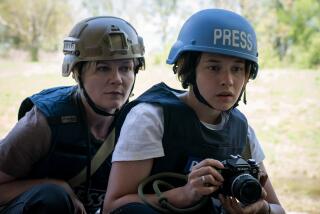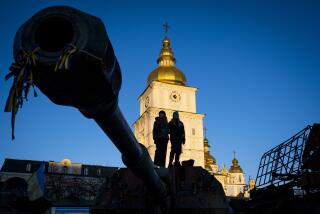NONFICTION - June 16, 1996
IN THE BALKANS Photos by Nikos Economopoulos; introduction by Frank Viviano (Magnum Photos: $29.95, 128 pp.). In recent history, no place has been associated with barbarism and bloodshed more than the Balkans. Every negative epithet has been thrown its way: divisive, smoldering, fragmented, chaotic. . . . But in his stirring collection of black-and-white photography, Nikos Economopoulos is trying to do exactly the opposite--point out the underlying human experiences that unite Slavs, Greeks, Turks and other ethnic groups on this crowded peninsula in southeastern Europe.
“I searched through my photographs,” Economopoulos writes in the foreword, “for the flame in everyday Balkan life that both melts the Balkan people together, yet continues to blast them apart.”
Born in Kalamata, Greece, Economopoulos did what was necessary to make this book: He quit his job. He said goodbye to a long journalism career and, from 1988 to 1990, traveled the region in quest of that common Balkan flame.
That search has reaped immensely successful results. The pages flicker with tense, dark-and-light imagery of daily life. In the process, we’re reminded of the land’s vast historical legacy, which includes domination by Alexander the Great, the Ottoman Turks and, most recently, Communist regimes. One photo shows a toppled statue of a Communist leader in Bulgaria resting beside an old tree (suggesting in a poetic way that dictatorships are not the will of nature) while elsewhere the struggle for freedom seems elusive and hidden in the spooky, foggy streets of Bucharest, just days after the Romanian regime was overthrown.
The shared experience of being human also is found on every page: fear on a Turkish woman’s face as she watches a tank roll past is seen again a few pages later in the faces of Albanians awaiting an uncertain future in a refugee camp in Greece. What we have here is a collection of moods calculated by the photographer to puzzle and captivate Western readers, much in the same way that hearing a conversation in an unfamiliar language does.
But the biggest question is, how did Economopoulos get these pictures? So intimate, so intensely private! Many subjects are completely unaware of the camera lens. We witness a drunken Romanian woman, moments after smashing her empty bottle on the street, while a young Albanian soldier is caught as he peeks at the bottle of wine he just bought on the black market. One thing is sure, Economopoulos’ sense of timing is breathtaking.
Add to this a brief but amazingly rich introduction to Balkan history written by Frank Viviano, a European correspondent for the San Francisco Chronicle, and one comes away with something far above what travel guides say about Balkan life. Next to actually being there, this book comes pretty close to educating Westerners about the “Balkan paradox,” as Viviano explains, “the constant juxtaposition of the catastrophic and the deceptively mundane.”
More to Read
Sign up for our Book Club newsletter
Get the latest news, events and more from the Los Angeles Times Book Club, and help us get L.A. reading and talking.
You may occasionally receive promotional content from the Los Angeles Times.






